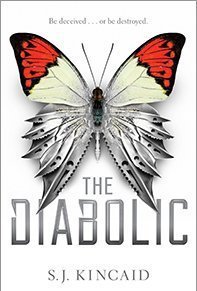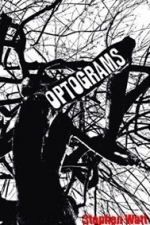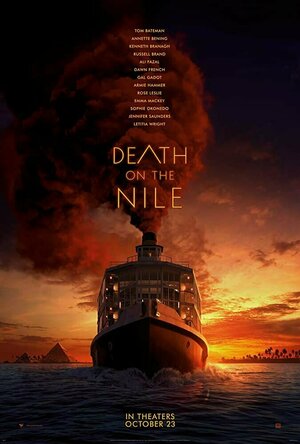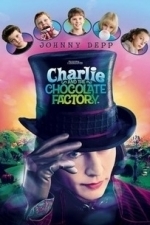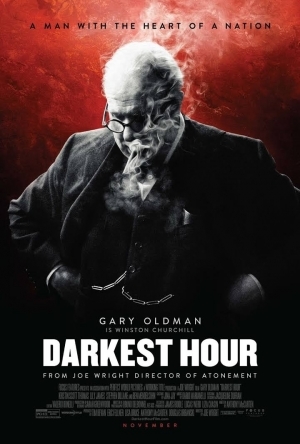Search
Goddess in the Stacks (553 KP) rated The Diabolic in Books
Dec 25, 2018
I really enjoyed this book. There were twists I absolutely did not see coming, and Nemesis's confusion over whether she is truly human or not is an absorbing part of the plotline.
The book opens on Nemesis, an artificially created humanoid, as a child, being bonded to her charge, Sidonia Impyrean. The chemically-induced bonding creates an artificial love from Nemesis towards Sidonia - a love so strong she will kill and die to protect her. Many years later, Diabolics - what Nemesis is - are outlawed. Rather than kill Nemesis, Sidonia's family fakes her death, and eventually sends Nemesis to court masquerading as Sidonia. No one has seen Sidonia before, so the masquerade is fairly easy, other than hiding Nemesis' real abilities as one of the last Diabolics. Thrown into a world of conspiracies and courtly intrigue, Nemesis flails a little bit, but eventually finds her footing, and I can't say anymore than that because that's when the plot twists start!
This is one of the most surprising YA books I've read. I only anticipated one or two of the twists; many of the events revealed themselves to the reader at the same time that Nemesis uncovers them, which makes sense, as the book is told from her point of view.
The bond between Sidonia and Nemesis is strong and intriguing, even across star systems. I wish their relationship had been explored more. Sidonia always believed Nemesis was truly human, even when Nemesis did not. The book did not delve deeply into the actual creation of Diabolics; I'm hoping the sequel does. I'm curious if they are actually created, or if they are genetically modified humans and that's just a closely guarded secret. (Even if they are created, they're human in every way except their strength and endurance - I'm sure they're simply modified in the womb. Or test tube. Whichever. I really hope the sequel gets into that.)
I have the sequel, The Empress, requested from the library, but it's supposed to be a trilogy. I don't know when the third is due out.
This is a fantastic, surprising YA book with interesting politics and world building. I really want to learn more about the history of this world, and hopefully the rest of the trilogy will cover that.
You can find all my reviews at http://goddessinthestacks.com
The book opens on Nemesis, an artificially created humanoid, as a child, being bonded to her charge, Sidonia Impyrean. The chemically-induced bonding creates an artificial love from Nemesis towards Sidonia - a love so strong she will kill and die to protect her. Many years later, Diabolics - what Nemesis is - are outlawed. Rather than kill Nemesis, Sidonia's family fakes her death, and eventually sends Nemesis to court masquerading as Sidonia. No one has seen Sidonia before, so the masquerade is fairly easy, other than hiding Nemesis' real abilities as one of the last Diabolics. Thrown into a world of conspiracies and courtly intrigue, Nemesis flails a little bit, but eventually finds her footing, and I can't say anymore than that because that's when the plot twists start!
This is one of the most surprising YA books I've read. I only anticipated one or two of the twists; many of the events revealed themselves to the reader at the same time that Nemesis uncovers them, which makes sense, as the book is told from her point of view.
The bond between Sidonia and Nemesis is strong and intriguing, even across star systems. I wish their relationship had been explored more. Sidonia always believed Nemesis was truly human, even when Nemesis did not. The book did not delve deeply into the actual creation of Diabolics; I'm hoping the sequel does. I'm curious if they are actually created, or if they are genetically modified humans and that's just a closely guarded secret. (Even if they are created, they're human in every way except their strength and endurance - I'm sure they're simply modified in the womb. Or test tube. Whichever. I really hope the sequel gets into that.)
I have the sequel, The Empress, requested from the library, but it's supposed to be a trilogy. I don't know when the third is due out.
This is a fantastic, surprising YA book with interesting politics and world building. I really want to learn more about the history of this world, and hopefully the rest of the trilogy will cover that.
You can find all my reviews at http://goddessinthestacks.com

palmEM: Emergency Medicine Essentials & Urgent Care Quick Reference Pocket Guide
Medical and Health & Fitness
App
The top emergency medicine quick reference! The number 1 medical app in 75 countries. iTunes...

n-Track 8 Pro
Music and Productivity
App
Record and playback a virtually unlimited number of audio and MIDI tracks, mix them during playback...
Eilidh G Clark (177 KP) rated Optograms in Books
May 13, 2017
Great Collection
Stephen Watt is a poet and spoken word artist from Dumbarton. I stumbled upon his work by accident, and was drawn by his likeness in style to a favourite poet of mine, Raymond Carver. Delighted by what I had read, I preceded to watch some of his spoken word performances on You Tube. I was not disappointed. Watt’s poetry and indeed his spoken word delivery, is smart, punchy, intelligent and contemporary. I was delighted to be offered the opportunity to review his new poetry pamphlet Optograms, published by Wild Word press in 2016. Optograms is a wonderful representation of Watt’s finest work, and is a fresh new approach to Scottish poetry. The poet tackles some controversial topics such as prostitution, homelessness, and gender as well as delving into the more intimate topics such as miscarriage and Alzheimer’s. The imagery is his work is striking and each word and line carefully crafted, but it is the way in which the poems radiate emotion that make this work unique. The readers need look no further than the opening poem to get an understanding of the poet’s compassion and understanding of contemporary society. ‘Lipstick’ explores gender representation and discrimination,
I go to my room, wiping
the admirer’s lipstick clean
with tights beneath jeans
retrieved from a friend’s house,
and with the words
Big Girl’s Blouse
reverberating inside my head
This poem speaks volumes in so little words and the reader is forced to look inwardly at their own behaviour toward people who do not conform to the norm. Similarly, ‘Prayers to Aliens and Satellites’ is a raw and candid view of homelessness which digs deep into the readers conscience,
where bloodless, xylophonic fingers
sink into armpits –
petitioned hands closed to benefits
and the friendships of passersby.
Like the previous poem, ‘Prayers to Aliens and Satellites’ urges the reader to become more aware of the social problems in society. If these poems are not enough to capture the heart of the reader, Watt surprises us with his heart crushing honesty in poems such as ‘Clinics Lip’ – a grief stricken account of miscarriage,
A husband, once the acme of affection,
now lollygagging in the garden;
crossmaker in waiting
for the small plot earmarked for the hill’s crest.
My own personal favourite is ‘Trouble was Someone Else’s Kid’, a short account of childhood memories, like a fragment of memoir condensed into neatly arranged stanza’s. There is something funny yet tragic about this poem that brought to me both nostalgia and a desire to relive my own fading youth.
We moved in shadows, kept the lid
on, as if peanut butter sandwiches
had pasted our lips together.
Other neighbourhoods sizzled
with pyromaniacs and politics,
alcoholics who played tin whistles
when Di and Charles got hitched.
These are only a few of the delights that can be found in this little treasure of a pamphlet and I would urge poetry lovers as well as those who are new to poetry to seek out a copy of this work. With twenty-six wonderful poems Optograms, is undoubtedly one of the best collections of contemporary Scottish poetry that I have read.
To learn more about the Stephen Watt you can visit The Scottish Poetry Library, http://www.scottishpoetrylibrary.org.uk/poetry/poets/stephen-watt or like his Facebook page @StephenWattSpit. Optograms, can be purchased from stephenwattspit299@gmail.com or the publisher Marc Sherland marcsherland@me.com at Wild Word Press.
I go to my room, wiping
the admirer’s lipstick clean
with tights beneath jeans
retrieved from a friend’s house,
and with the words
Big Girl’s Blouse
reverberating inside my head
This poem speaks volumes in so little words and the reader is forced to look inwardly at their own behaviour toward people who do not conform to the norm. Similarly, ‘Prayers to Aliens and Satellites’ is a raw and candid view of homelessness which digs deep into the readers conscience,
where bloodless, xylophonic fingers
sink into armpits –
petitioned hands closed to benefits
and the friendships of passersby.
Like the previous poem, ‘Prayers to Aliens and Satellites’ urges the reader to become more aware of the social problems in society. If these poems are not enough to capture the heart of the reader, Watt surprises us with his heart crushing honesty in poems such as ‘Clinics Lip’ – a grief stricken account of miscarriage,
A husband, once the acme of affection,
now lollygagging in the garden;
crossmaker in waiting
for the small plot earmarked for the hill’s crest.
My own personal favourite is ‘Trouble was Someone Else’s Kid’, a short account of childhood memories, like a fragment of memoir condensed into neatly arranged stanza’s. There is something funny yet tragic about this poem that brought to me both nostalgia and a desire to relive my own fading youth.
We moved in shadows, kept the lid
on, as if peanut butter sandwiches
had pasted our lips together.
Other neighbourhoods sizzled
with pyromaniacs and politics,
alcoholics who played tin whistles
when Di and Charles got hitched.
These are only a few of the delights that can be found in this little treasure of a pamphlet and I would urge poetry lovers as well as those who are new to poetry to seek out a copy of this work. With twenty-six wonderful poems Optograms, is undoubtedly one of the best collections of contemporary Scottish poetry that I have read.
To learn more about the Stephen Watt you can visit The Scottish Poetry Library, http://www.scottishpoetrylibrary.org.uk/poetry/poets/stephen-watt or like his Facebook page @StephenWattSpit. Optograms, can be purchased from stephenwattspit299@gmail.com or the publisher Marc Sherland marcsherland@me.com at Wild Word Press.

Electrician Clinic
Education and Reference
App
This collection of 888 training videos will teach you all about what it takes to be an electrician. ...
Kirk Bage (1775 KP) rated Moonlighting in TV
Aug 6, 2020
Contains spoilers, click to show
Another dip into the retro TV archive as part of that odd period in lockdown when all I could do for my watching fix was find old shows with full episodes on You Tube. My favourite show when I was a teenager happened to be one of those, with most of seasons 1 and 5 out there, and a small selection from the middle years.
If you were to make a time capsule to show aliens what the mid to late 80s looked like, look no further than this madcap rom-com drama that ran for 66 episodes between 1985 and 1989. The shoulder pads, the hairdos, the slip on shoes, the large chunks of cheesiness, it’s all there. Some of the coloured silks Maddie Hayes (Cybill Shepherd) wears have to be seen to be believed.
It was the first show to get free reign creatively from a network, with ABC trusting Glenn Gordon Carol, fresh from success with Remington Steele, to create something cool and hip. At the peak of its success it was costing $1.6m per episode, with Bruce Willis’ pay check becoming a big chunk of that, as his ego inflated and his star rose.
They auditioned close to 600 actors for the role of glib, fast talking sleuth David Addison, before taking a risk on an out of work nobody the producers had heard singing karaoke in an LA bar. The phenomenal buzz around Bruce Willis in 1985 is hard to imagine now, but he was literally the biggest star on TV, and once Die Hard came along in 1988, he gave the movie star thing a good go too.
Famous for its post-modern take on episode content, with overlapping dialogue, direct address to camera, in jokes and endless references to current events and the show itself, it was a knowingly self-conscious misfit. Nothing had ever been like this. Nothing, even close. It was funny, cool, had mass appeal and could seemingly do no wrong, breaking ratings records all over the place.
But all was not paradise on set. Shepherd and Willis were never pals, and at the worst actively despised one another, often refusing to film scenes if they thought the other one was too much the focus – which in Shepherd’s case was often a weird anachronistic soft focus, that attempted to make her look like a vintage movie star. They argued, fell out, made up and threw tantrums just like the characters they played. And scripts for the unusual hour long format were often so late, they filmed filler scenes whilst they were being finished on set!
This allowed for an unparalleled voice in American TV land. They got away with some very terse comments and innuendo bordering on smut, that slipped under the network radar, simply because the show was being edited minutes before it was shown. By season four it was really falling apart, as episodes got more surreal and used the breaking of the fourth wall more often, in a desperate attempt just to keep going.
Ostensibly, it was a detective show. But it was never about the cases. The sleuthing was only a background to the will they won’t they romance of Maddie and David, facilitated by the ever present Allyce Beasley as Agnes DiPesto, the rhyming receptionist, that was the only other cast member to appear in all 66 shows apart from the two stars. Early on the mystery plots and crimes to be solved were taken semi seriously; with a peak in season three where it actually approached proper drama. But by the end it was all about Willis goofing around, at the expense of any recognisable story.
Let’s face it, looking back on it now it has aged a whole bunch in a lot of bad ways. You aren’t really going to indulge in it for anything other than nostalgia reasons. But I was a huge, huge fan, and so for me it was a real trip to see it again. I never missed it as a kid, and would sulk if anything threatened to stop me watching it as it aired. I had every episode taped on VHS and could quote entire episodes, I had watched them so much.
It all ended too soon for me, but not soon enough for them. Shepherd got pregnant, Willis took the break to go and make some mid budget action film, and the rest is history. To this day, footage of them reminiscing about it is a fascinating but awkward watch, as they clearing still can’t agree on anything and thinly veil their contempt for each other. Willis’ ego does not come out of it well, but David Addison will always remain the one character that formed my personality via TV in those days, for better or worse.
If you were to make a time capsule to show aliens what the mid to late 80s looked like, look no further than this madcap rom-com drama that ran for 66 episodes between 1985 and 1989. The shoulder pads, the hairdos, the slip on shoes, the large chunks of cheesiness, it’s all there. Some of the coloured silks Maddie Hayes (Cybill Shepherd) wears have to be seen to be believed.
It was the first show to get free reign creatively from a network, with ABC trusting Glenn Gordon Carol, fresh from success with Remington Steele, to create something cool and hip. At the peak of its success it was costing $1.6m per episode, with Bruce Willis’ pay check becoming a big chunk of that, as his ego inflated and his star rose.
They auditioned close to 600 actors for the role of glib, fast talking sleuth David Addison, before taking a risk on an out of work nobody the producers had heard singing karaoke in an LA bar. The phenomenal buzz around Bruce Willis in 1985 is hard to imagine now, but he was literally the biggest star on TV, and once Die Hard came along in 1988, he gave the movie star thing a good go too.
Famous for its post-modern take on episode content, with overlapping dialogue, direct address to camera, in jokes and endless references to current events and the show itself, it was a knowingly self-conscious misfit. Nothing had ever been like this. Nothing, even close. It was funny, cool, had mass appeal and could seemingly do no wrong, breaking ratings records all over the place.
But all was not paradise on set. Shepherd and Willis were never pals, and at the worst actively despised one another, often refusing to film scenes if they thought the other one was too much the focus – which in Shepherd’s case was often a weird anachronistic soft focus, that attempted to make her look like a vintage movie star. They argued, fell out, made up and threw tantrums just like the characters they played. And scripts for the unusual hour long format were often so late, they filmed filler scenes whilst they were being finished on set!
This allowed for an unparalleled voice in American TV land. They got away with some very terse comments and innuendo bordering on smut, that slipped under the network radar, simply because the show was being edited minutes before it was shown. By season four it was really falling apart, as episodes got more surreal and used the breaking of the fourth wall more often, in a desperate attempt just to keep going.
Ostensibly, it was a detective show. But it was never about the cases. The sleuthing was only a background to the will they won’t they romance of Maddie and David, facilitated by the ever present Allyce Beasley as Agnes DiPesto, the rhyming receptionist, that was the only other cast member to appear in all 66 shows apart from the two stars. Early on the mystery plots and crimes to be solved were taken semi seriously; with a peak in season three where it actually approached proper drama. But by the end it was all about Willis goofing around, at the expense of any recognisable story.
Let’s face it, looking back on it now it has aged a whole bunch in a lot of bad ways. You aren’t really going to indulge in it for anything other than nostalgia reasons. But I was a huge, huge fan, and so for me it was a real trip to see it again. I never missed it as a kid, and would sulk if anything threatened to stop me watching it as it aired. I had every episode taped on VHS and could quote entire episodes, I had watched them so much.
It all ended too soon for me, but not soon enough for them. Shepherd got pregnant, Willis took the break to go and make some mid budget action film, and the rest is history. To this day, footage of them reminiscing about it is a fascinating but awkward watch, as they clearing still can’t agree on anything and thinly veil their contempt for each other. Willis’ ego does not come out of it well, but David Addison will always remain the one character that formed my personality via TV in those days, for better or worse.
Chris Sawin (602 KP) rated Death on the Nile (2022) in Movies
Feb 10, 2022
Most of the female cast. (2 more)
Poirot's backstory.
Kenneth Branagh's mustache.
Slow-moving with little payoff. (2 more)
Nothing substantial happens for the first hour.
Not entertaining. Perfect example of first world problems.
A Drowzy Whodunit Loaded with Mediocrity
Death on the Nile is the sequel to 2017’s Murder on the Orient Express with director and lead actor Kenneth Branagh returning. The mystery thriller is based on the 1937 novel of the same name by Agatha Christie. Death on the Nile has been adapted before as a 1978 film and as a 2004 episode of the Poirot television series starring David Suchet.
The 2022 film has been completed since December of 2019. The film was moved around several times due to COVID and was pushed back even further after Armie Hammer’s abuse allegations.
Mostly occurring shortly after the events of Murder on the Orient Express, Death on the Nile offers a bit of a look into the past of Hercule Poirot (Branagh). Taking place on the Yser Bridge in Belgium In 1914, a young Poirot advises his Belgian captain to attack the Germans spontaneously without warning. The attack is a success, but Poirot’s captain triggers an explosive after their victory. The explosion leaves Poirot’s face heavily scarred and offers an explanation as to why he always has a mustache.
Poirot reunites with his friend Bouc (Tom Bateman, who also returns from Murder on the Orient Express) in Egypt. Bouc is traveling with his mother Euphemia (Annette Bening) and their friends as they celebrate the marriage of Linnet Ridgeway (Gal Gadot) and Simon Doyle (Armie Hammer). To make matters more complicated, Simon was originally romantically involved with Jaqueline (Emma Mackey) who was also a former friend of Linnet. She now scornfully follows Simon and Linnet around Egypt.
The party travels on the S. S. Karnak, a steamship, along the river Nile. A murder eventually takes place on the steamship, which ignites a desire within Poirot to discover who the killer is before more suffer the same fate.
CGI and visual effects are used to make Kenneth Branagh look younger in the opening sequence of the film. The issue is he looks almost as bad as Henry Cavill did as Superman during the reshoots for Justice League. Branagh’s upper lip is almost nonexistent during this sequence and his philtrum seems to barely move when he speaks. It’s a visual nightmare and a terrible way to jump start a murder mystery.
Poirot travels to a Jazz nightclub where he’s first introduced to Simon, Jacqueline, and Linnet. Poirot spends much of the film embracing his OCD habits and people watching. This first nightclub sequence is about ten minutes long and you’re basically forced to watch people do nothing but dance for that entire time. Armie Hammer’s overly sexual dancing combined with his heavy breathing and constant sweating with both Gal Gadot and Emma Mackey is nauseating even without taking his sexual allegations into consideration.
Nothing really happens in the film for the first hour. Death on the Nile takes its time getting to the murder as little things begin to disappear (like a tube of paint) and Simon and Linnet are nearly crushed to death by a falling rock as they’re practically mid-coitus while sightseeing some pyramids. Emma Mackey gives a particularly strong performance. She is blinded by one-sided love in the film and her performance is a combination of passion, borderline insanity, and a broken heart.
Annette Bening is so cynical that it’s humorous and Jennifer Saunders adds just enough sarcastic bite to remind us ever so slightly of Absolutely Fabulous. Letitia Wright portrays business manager Rosalie Otterbourne. Her performance is intriguing because she’s always fighting for what she feels like she’s rightfully owed; whether it’s the right amount of money for her services or her happiness away from the limelight.
Like Murder on the Orient Express and other Agatha Christie adaptations, the enticing aspect of Death on the Nile is not only its massive and recognizable cast but also the fact that the story is written in a way that everyone is a suspect. The film’s nonchalant way of meandering towards that first murder is frustrating. A deliberate pace is one thing, but Death on the Nile is boring for the most part. Poirot is asked to take a case involving Jacqueline and the safety of Simon and Linnet, but is then mocked for being heartless and not being able to solve the case sooner. The people on board are likely meant to be scared, but come off as rich people not getting what they want the instant they want it.
Death on the Nile crawls towards a resolution you don’t feel invested in. Poirot’s backstory is interesting and there are some solid performances especially from the female cast, but the film otherwise feels like an unwanted game of Guess Who after you unwillingly chug two bottles of NyQuil and are asked to predict who the killer is after two long hours of tediousness.
The 2022 film has been completed since December of 2019. The film was moved around several times due to COVID and was pushed back even further after Armie Hammer’s abuse allegations.
Mostly occurring shortly after the events of Murder on the Orient Express, Death on the Nile offers a bit of a look into the past of Hercule Poirot (Branagh). Taking place on the Yser Bridge in Belgium In 1914, a young Poirot advises his Belgian captain to attack the Germans spontaneously without warning. The attack is a success, but Poirot’s captain triggers an explosive after their victory. The explosion leaves Poirot’s face heavily scarred and offers an explanation as to why he always has a mustache.
Poirot reunites with his friend Bouc (Tom Bateman, who also returns from Murder on the Orient Express) in Egypt. Bouc is traveling with his mother Euphemia (Annette Bening) and their friends as they celebrate the marriage of Linnet Ridgeway (Gal Gadot) and Simon Doyle (Armie Hammer). To make matters more complicated, Simon was originally romantically involved with Jaqueline (Emma Mackey) who was also a former friend of Linnet. She now scornfully follows Simon and Linnet around Egypt.
The party travels on the S. S. Karnak, a steamship, along the river Nile. A murder eventually takes place on the steamship, which ignites a desire within Poirot to discover who the killer is before more suffer the same fate.
CGI and visual effects are used to make Kenneth Branagh look younger in the opening sequence of the film. The issue is he looks almost as bad as Henry Cavill did as Superman during the reshoots for Justice League. Branagh’s upper lip is almost nonexistent during this sequence and his philtrum seems to barely move when he speaks. It’s a visual nightmare and a terrible way to jump start a murder mystery.
Poirot travels to a Jazz nightclub where he’s first introduced to Simon, Jacqueline, and Linnet. Poirot spends much of the film embracing his OCD habits and people watching. This first nightclub sequence is about ten minutes long and you’re basically forced to watch people do nothing but dance for that entire time. Armie Hammer’s overly sexual dancing combined with his heavy breathing and constant sweating with both Gal Gadot and Emma Mackey is nauseating even without taking his sexual allegations into consideration.
Nothing really happens in the film for the first hour. Death on the Nile takes its time getting to the murder as little things begin to disappear (like a tube of paint) and Simon and Linnet are nearly crushed to death by a falling rock as they’re practically mid-coitus while sightseeing some pyramids. Emma Mackey gives a particularly strong performance. She is blinded by one-sided love in the film and her performance is a combination of passion, borderline insanity, and a broken heart.
Annette Bening is so cynical that it’s humorous and Jennifer Saunders adds just enough sarcastic bite to remind us ever so slightly of Absolutely Fabulous. Letitia Wright portrays business manager Rosalie Otterbourne. Her performance is intriguing because she’s always fighting for what she feels like she’s rightfully owed; whether it’s the right amount of money for her services or her happiness away from the limelight.
Like Murder on the Orient Express and other Agatha Christie adaptations, the enticing aspect of Death on the Nile is not only its massive and recognizable cast but also the fact that the story is written in a way that everyone is a suspect. The film’s nonchalant way of meandering towards that first murder is frustrating. A deliberate pace is one thing, but Death on the Nile is boring for the most part. Poirot is asked to take a case involving Jacqueline and the safety of Simon and Linnet, but is then mocked for being heartless and not being able to solve the case sooner. The people on board are likely meant to be scared, but come off as rich people not getting what they want the instant they want it.
Death on the Nile crawls towards a resolution you don’t feel invested in. Poirot’s backstory is interesting and there are some solid performances especially from the female cast, but the film otherwise feels like an unwanted game of Guess Who after you unwillingly chug two bottles of NyQuil and are asked to predict who the killer is after two long hours of tediousness.
TheDefunctDiva (304 KP) rated Charlie and the Chocolate Factory (2005) in Movies
Sep 27, 2017
C is for Candy
Contains spoilers, click to show
And yes, I certainly mean eye candy. Johnny Depp is gorgeous despite the makeup artists’ attempts to make him seem pale and awkward. My brain isn’t working properly due to lack of sleep so I’ll just go ahead and warn you that this is more a regurgitation than a review. Read at your own risk, because I even give the entire ending of the movie away…
This is the story of Charlie Bucket, an impoverished but genuinely good-natured child. His dream is one of millions: to win a Golden Ticket, and tour Willy Wonka’s chocolate factory in the hopes of obtaining an even bigger prize. If this plot sounds familiar, it’s because you’ve seen Willy Wonka and the Chocolate Factory, or have read the book. I profess my ignorance, for I haven’t read the book Roald Dahl wrote, and therefore have no idea which movie version adheres more strictly to the original text.
Let’s move on by more closely examining Burton’s version. Despite some of the world’s most recalcitrant children winning the four other tickets, Charlie lucks out and becomes the recipient of the last Golden Ticket. This brings great joy to his family and even makes the bed-ridden Grandpa Joe ambulatory again. I love Charlie’s family, especially because his Dad works in a toothpaste factory but everyone in the family has nasty teeth.
The glorious day of the tour arrives and each child shows up with a parental or grandparental guardian. They are introduced first to Willy Wonka by means of a puppet show, which ends in a glorious and unintentional fire. With the smoldering puppets dying disturbingly in the background, Wonka appears with cue cards, giving the impression that the man has no idea how to socially interact. The group then enters the factory.
The first child to be eliminated from the contest is Augustus Gloop. The group has been given free reign of a room made entirely of candy. Augustus cannot resist the lake of chocolate, and he falls in. He is sucked up a tube that leads to the fudge room. Then the Oompa Loompas appear and perform a song engineered for this particular predictable tragedy.
The Oompa Loompas in Burton’s version are short, and they do not have orange hair, but they all have the same face and body. Deep Roy, the actor portraying the Oompa Loompas, deserved an Oscar for effort in my book, for the special features indicate how very involved he was with this production. The songs sung by the Oompa Loompas varied significantly from those in the older version. In fact, I enjoyed how each song of admonishment involved a specific genre of music.
Next Violet Beauregard, the competitive one, is turned into a blueberry by chewing gum. And then we have the case of the sad and supremely spoiled Veruca Salt, who ends up getting thrown down a garbage chute by some very judgmental and highly trained squirrels. After each young lady has been expelled from the contest, the Oompa Loompas say adieu with a musical number.
Throughout the film, Wonka has flashbacks about his father. It seems the elder Wonka was a dentist, and he forbade the young Willy to eat candy. Several scenes show Willy Wonka defying the will of his father, which ultimately led Willy to be a world-renowned chocolatier. Though it was nice to have this subplot as an explanation for some of Wonka’s erratic behavior, I found that I like Gene Wilder’s portrayal of Willy Wonka better. He was whimsical and strange, but the film and the actor seemed to offer no explanation as to how he got that way.
Mike Teavee, a young boy with the attention span of a gnat on amphetamines, is the last of the factory’s victims. He decides to teleport himself into a television screen, which I’m sure seemed like a good idea at the time. Teavee is shown in peril as an Oompa Loompa flips the channels. Now incredibly small, Wonka decides that the best remedy for Mike is the taffy pulling machine.
Charlie is the only child left, and Wonka ushers Charlie and Grandpa Joe into the glass elevator. According to the button, they are going up and out. Indeed, they do, eventually stopping when they crash through the roof of the Bucket house. The grand prize is revealed: Willy Wonka is giving Charlie the factory. This becomes impossible when Wonka forces Charlie to choose between factory and family. Eventually, Wonka reconciles his Daddy issues and allows Charlie’s family to stay at the factory.
The visual effects in this film were amazing. As mentioned previously, Deep Roy was incredible as the face of the many Oompa Loompas. I thought the child actors in this film were also impressive in how they perfectly captured their respective vices. Overall, this was a good film. And yet I still miss moments from the older film, especially the poem with “the grisly reaper mowing.” Call me sentimental…
This is the story of Charlie Bucket, an impoverished but genuinely good-natured child. His dream is one of millions: to win a Golden Ticket, and tour Willy Wonka’s chocolate factory in the hopes of obtaining an even bigger prize. If this plot sounds familiar, it’s because you’ve seen Willy Wonka and the Chocolate Factory, or have read the book. I profess my ignorance, for I haven’t read the book Roald Dahl wrote, and therefore have no idea which movie version adheres more strictly to the original text.
Let’s move on by more closely examining Burton’s version. Despite some of the world’s most recalcitrant children winning the four other tickets, Charlie lucks out and becomes the recipient of the last Golden Ticket. This brings great joy to his family and even makes the bed-ridden Grandpa Joe ambulatory again. I love Charlie’s family, especially because his Dad works in a toothpaste factory but everyone in the family has nasty teeth.
The glorious day of the tour arrives and each child shows up with a parental or grandparental guardian. They are introduced first to Willy Wonka by means of a puppet show, which ends in a glorious and unintentional fire. With the smoldering puppets dying disturbingly in the background, Wonka appears with cue cards, giving the impression that the man has no idea how to socially interact. The group then enters the factory.
The first child to be eliminated from the contest is Augustus Gloop. The group has been given free reign of a room made entirely of candy. Augustus cannot resist the lake of chocolate, and he falls in. He is sucked up a tube that leads to the fudge room. Then the Oompa Loompas appear and perform a song engineered for this particular predictable tragedy.
The Oompa Loompas in Burton’s version are short, and they do not have orange hair, but they all have the same face and body. Deep Roy, the actor portraying the Oompa Loompas, deserved an Oscar for effort in my book, for the special features indicate how very involved he was with this production. The songs sung by the Oompa Loompas varied significantly from those in the older version. In fact, I enjoyed how each song of admonishment involved a specific genre of music.
Next Violet Beauregard, the competitive one, is turned into a blueberry by chewing gum. And then we have the case of the sad and supremely spoiled Veruca Salt, who ends up getting thrown down a garbage chute by some very judgmental and highly trained squirrels. After each young lady has been expelled from the contest, the Oompa Loompas say adieu with a musical number.
Throughout the film, Wonka has flashbacks about his father. It seems the elder Wonka was a dentist, and he forbade the young Willy to eat candy. Several scenes show Willy Wonka defying the will of his father, which ultimately led Willy to be a world-renowned chocolatier. Though it was nice to have this subplot as an explanation for some of Wonka’s erratic behavior, I found that I like Gene Wilder’s portrayal of Willy Wonka better. He was whimsical and strange, but the film and the actor seemed to offer no explanation as to how he got that way.
Mike Teavee, a young boy with the attention span of a gnat on amphetamines, is the last of the factory’s victims. He decides to teleport himself into a television screen, which I’m sure seemed like a good idea at the time. Teavee is shown in peril as an Oompa Loompa flips the channels. Now incredibly small, Wonka decides that the best remedy for Mike is the taffy pulling machine.
Charlie is the only child left, and Wonka ushers Charlie and Grandpa Joe into the glass elevator. According to the button, they are going up and out. Indeed, they do, eventually stopping when they crash through the roof of the Bucket house. The grand prize is revealed: Willy Wonka is giving Charlie the factory. This becomes impossible when Wonka forces Charlie to choose between factory and family. Eventually, Wonka reconciles his Daddy issues and allows Charlie’s family to stay at the factory.
The visual effects in this film were amazing. As mentioned previously, Deep Roy was incredible as the face of the many Oompa Loompas. I thought the child actors in this film were also impressive in how they perfectly captured their respective vices. Overall, this was a good film. And yet I still miss moments from the older film, especially the poem with “the grisly reaper mowing.” Call me sentimental…
Bob Mann (459 KP) rated Darkest Hour (2017) in Movies
Sep 29, 2021
Not buggering it up.
As Doctor Who repeatedly points out, time is most definitely a tricksy thing. As I think I’ve commented on before, the events of 1940-45 are not in my lifetime but were sufficiently fresh to my parents that they were still actively talked about… so they still appear “current” to me. But I find it astonishing to realize that to a teen viewer this film is equivalent in timeframe to the sinking of the Titanic! #ancienthistory! So I suspect your connection to this film will be strongly affected by your age, and that was definitely reflected in the average age at my showing which must have been at least 60.
It’s 1940 and Western Europe is under siege. Neville Chamberlain (Ronald Pickup, “The Second Best Exotic Marigold Hotel“) is the Conservative Prime Minister but is voted out of office in an attempt to form a grand coalition government with Labour leader Clement Atlee (David Schofield). Despite appearing a shoe-in for the role, Viscount Halifax (Stephen Dillane) turns it down, thinking that his alternative (and bête noire) would drink from the poisoned chalice and be quickly be out of his (and Chamberlain’s) hair. For that alternative choice is the volatile and unpredictable Churchill (Gary Oldman), grudgingly invited into the job by King George VI (Ben Mendelsohn, “Rogue One“). With the Nazi’s bearing down on the 300,000 encircled troops at Dunkirk, and with calls from his war cabinet to capitulate and seek terms of settlement, this is indeed both Churchill’s, and the country’s, ‘darkest hour’.
Despite the woeful lack of historical knowledge among today’s youngsters, most will be at least aware of the story of Dunkirk, with many having absorbed Christopher Nolan’s film of last summer. This film is almost the matching bookend to that film, showing the terrifying behind-closed-door events that led up to that miracle. For it was terrifying seeing how close Britain came to the brink, and I’m not sure even I really appreciated that before. While this might have been a “thriller” if it had been a fictional story, we well know the outcome of the story: but even with this knowledge I still found the film to be extremely tense and claustrophobic as the net draws in around Churchill’s firmly-held beliefs.
Gary Oldman’s performance is extraordinary, and his award nominations are well-deserved. We have grown so used to some of his more over-the-top Russian portrayals in films like “Air Force One” and last year’s (pretty poor) “The Hitman’s Bodyguard” that it is easy to forget what a nuanced and flexible actor he is. Ever since that “No, surely not!” moment of that first glimpse of the film’s trailer, it has almost been impossible to ‘see’ Oldman behind the brilliant make-up of the character (Kazuhiro Tsuji gets a special credit for it). But his eyes are in there, and there are some extreme close-ups (for example, during a bizarre and tense phone call with Roosevelt (David Strathairn)) when you suddenly see “There you are!”.
The supportive wife – Clemmie (Kristin Scott Thomas) gives Winston (Gary Oldman) a hug.
While I have nothing against Brian Cox as an actor, I far prefer the portrayal of Churchill on show here compared to last year’s “Churchill“: true that that film was set three or four stressful years later, but Cox’s Churchill was portrayed as an incompetent fool, an embarrassment to the establishment that have to work around him. Oldman’s Churchill is irascible, unreasonable, but undeniably a leader and a great orator.
Mirroring “Churchill” though, the action is seen through the eyes of Churchill’s put-upon secretary, here played delightfully by Lily James (“Downton Abbey”, “Baby Driver“) who perfectly looks and sounds the part. The character is more successful than that of Ella Purnell’s Garrett in that she is given more room to develop her character and for the audience to warm to her. Oldman is getting all the kudos, but Lily James really deserves some for her touching and engaging performance here.
Perfectly cast: Lily James as Churchill’s secretary Elizabeth Layton.
Also in Oldman’s shadow is the always marvelous Kristin Scott Thomas (“Four Weddings and a Funeral”, “The English Patient”) as Clemmie Churchill, expressing all the love and frustration associated with being a long-suffering wife to an over-worked husband in the public service.
At the pen is “The Theory of Everything” writer Anthony McCarten, and I’d like to say its a great script but with most of the best lines (“a sheep in sheep’s clothing” – LoL) coming from Winston himself it’s difficult to tell. Some of the scenes can get a bit laborious and at 125 minutes – though not long by any means – the script could still perhaps have had a nip and tuck here and there.
Where some of this time is well spent though is in some sedate shots of London street life, across two separate scenes panning across everyday folk as the stresses of war start to become more evident. This is just one of the areas where director Joe Wright (“Atonement”, “Pride and Prejudice”) shows considerable panache, ably assisted by the cinematography of Bruno Delbonnel (“Inside Llewyn Davis“): a boy closes his telescope-fingers around Churchill’s plane; a bomb’s eye-view of the beleaguered Brigadier Nicholson in Calais; and – very impressively – the smoky imperiousness of the House of Commons set.
An atmospheric chamber: the recreation of the wartime House of Commons is spectacular (with production design by Sarah Greenwood (“Anna Karenina”, “Atonement”)).
And most-importantly Wright delivers what Christopher Nolan couldn’t deliver in “Dunkirk“: a properly CGI’d vista of hundred of small boats crossing the channel to Dunkirk. Now THAT is a scene that Kenneth Branagh could justly have looked in awe at!!!
There are a number of scenes that require disbelief to be suspended though: the biggest one being a tube train ride – very moving and effective I must say – but one that features the longest journey between any two stations on the District Line than has ever been experienced!
One stop on the District Line via Westminster…. via Harrow-on-the-Hill!
So this is a great film for really reliving a knife-edge moment in British history, and is highly recommended particularly for older viewers. If I’m honest though, between “Darkest Hour”, “Churchill” and John Lithgow’s excellent portrayal in “The Crown” I’m all over portrayals of the great man for a few years. Can we please move on now Hollywood?
It’s 1940 and Western Europe is under siege. Neville Chamberlain (Ronald Pickup, “The Second Best Exotic Marigold Hotel“) is the Conservative Prime Minister but is voted out of office in an attempt to form a grand coalition government with Labour leader Clement Atlee (David Schofield). Despite appearing a shoe-in for the role, Viscount Halifax (Stephen Dillane) turns it down, thinking that his alternative (and bête noire) would drink from the poisoned chalice and be quickly be out of his (and Chamberlain’s) hair. For that alternative choice is the volatile and unpredictable Churchill (Gary Oldman), grudgingly invited into the job by King George VI (Ben Mendelsohn, “Rogue One“). With the Nazi’s bearing down on the 300,000 encircled troops at Dunkirk, and with calls from his war cabinet to capitulate and seek terms of settlement, this is indeed both Churchill’s, and the country’s, ‘darkest hour’.
Despite the woeful lack of historical knowledge among today’s youngsters, most will be at least aware of the story of Dunkirk, with many having absorbed Christopher Nolan’s film of last summer. This film is almost the matching bookend to that film, showing the terrifying behind-closed-door events that led up to that miracle. For it was terrifying seeing how close Britain came to the brink, and I’m not sure even I really appreciated that before. While this might have been a “thriller” if it had been a fictional story, we well know the outcome of the story: but even with this knowledge I still found the film to be extremely tense and claustrophobic as the net draws in around Churchill’s firmly-held beliefs.
Gary Oldman’s performance is extraordinary, and his award nominations are well-deserved. We have grown so used to some of his more over-the-top Russian portrayals in films like “Air Force One” and last year’s (pretty poor) “The Hitman’s Bodyguard” that it is easy to forget what a nuanced and flexible actor he is. Ever since that “No, surely not!” moment of that first glimpse of the film’s trailer, it has almost been impossible to ‘see’ Oldman behind the brilliant make-up of the character (Kazuhiro Tsuji gets a special credit for it). But his eyes are in there, and there are some extreme close-ups (for example, during a bizarre and tense phone call with Roosevelt (David Strathairn)) when you suddenly see “There you are!”.
The supportive wife – Clemmie (Kristin Scott Thomas) gives Winston (Gary Oldman) a hug.
While I have nothing against Brian Cox as an actor, I far prefer the portrayal of Churchill on show here compared to last year’s “Churchill“: true that that film was set three or four stressful years later, but Cox’s Churchill was portrayed as an incompetent fool, an embarrassment to the establishment that have to work around him. Oldman’s Churchill is irascible, unreasonable, but undeniably a leader and a great orator.
Mirroring “Churchill” though, the action is seen through the eyes of Churchill’s put-upon secretary, here played delightfully by Lily James (“Downton Abbey”, “Baby Driver“) who perfectly looks and sounds the part. The character is more successful than that of Ella Purnell’s Garrett in that she is given more room to develop her character and for the audience to warm to her. Oldman is getting all the kudos, but Lily James really deserves some for her touching and engaging performance here.
Perfectly cast: Lily James as Churchill’s secretary Elizabeth Layton.
Also in Oldman’s shadow is the always marvelous Kristin Scott Thomas (“Four Weddings and a Funeral”, “The English Patient”) as Clemmie Churchill, expressing all the love and frustration associated with being a long-suffering wife to an over-worked husband in the public service.
At the pen is “The Theory of Everything” writer Anthony McCarten, and I’d like to say its a great script but with most of the best lines (“a sheep in sheep’s clothing” – LoL) coming from Winston himself it’s difficult to tell. Some of the scenes can get a bit laborious and at 125 minutes – though not long by any means – the script could still perhaps have had a nip and tuck here and there.
Where some of this time is well spent though is in some sedate shots of London street life, across two separate scenes panning across everyday folk as the stresses of war start to become more evident. This is just one of the areas where director Joe Wright (“Atonement”, “Pride and Prejudice”) shows considerable panache, ably assisted by the cinematography of Bruno Delbonnel (“Inside Llewyn Davis“): a boy closes his telescope-fingers around Churchill’s plane; a bomb’s eye-view of the beleaguered Brigadier Nicholson in Calais; and – very impressively – the smoky imperiousness of the House of Commons set.
An atmospheric chamber: the recreation of the wartime House of Commons is spectacular (with production design by Sarah Greenwood (“Anna Karenina”, “Atonement”)).
And most-importantly Wright delivers what Christopher Nolan couldn’t deliver in “Dunkirk“: a properly CGI’d vista of hundred of small boats crossing the channel to Dunkirk. Now THAT is a scene that Kenneth Branagh could justly have looked in awe at!!!
There are a number of scenes that require disbelief to be suspended though: the biggest one being a tube train ride – very moving and effective I must say – but one that features the longest journey between any two stations on the District Line than has ever been experienced!
One stop on the District Line via Westminster…. via Harrow-on-the-Hill!
So this is a great film for really reliving a knife-edge moment in British history, and is highly recommended particularly for older viewers. If I’m honest though, between “Darkest Hour”, “Churchill” and John Lithgow’s excellent portrayal in “The Crown” I’m all over portrayals of the great man for a few years. Can we please move on now Hollywood?
